





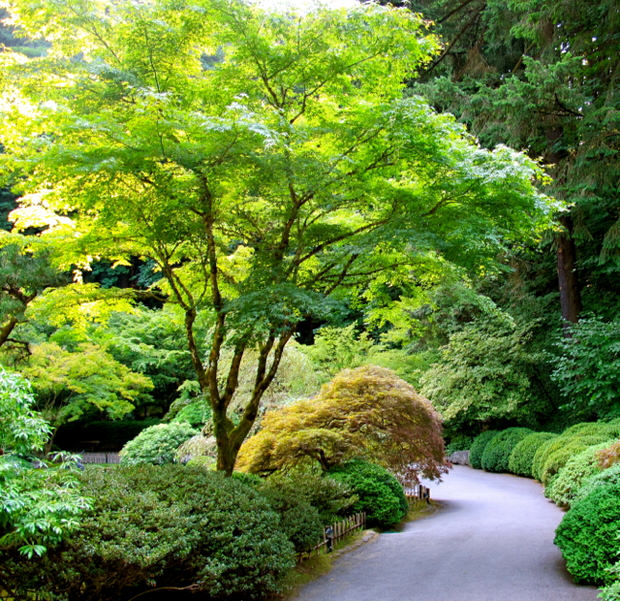
Japanese Maples are easily one of the most elegant and stunning specimen plants you can add to your garden. There are varieties that can be grown in containers, and few of them ever reach over 25 feet tall, making them adaptable to any space. The fall colors on Japanese Maples is stunning, and because of their smaller size, easy to appreciate in a small garden than a larger tree or shrub. Many varieties even look amazing all winter long with attractive bark and branch formation. They leaf out early with fresh green leaves, some of which change to reds or oranges as the season progresses. They are available in both red and green varieties, and some varieties have reached collector status.
Japanese Maples also have a reputation for being difficult to grow, but while they have needs that need to be attended to for best growth and color, they are a tough and adaptable plant.
Here are the steps on how to grow Japanese Maples, and our top fav varieties!
Sun vs. Shade
Japanese Maples are shade lovers, but they do need some sun in order to get to their best color. It’s best to provide morning sun and afternoon shade, or dappled shade at most. The farther south you are, the more afternoon shade should be provided. Below is an example of leaf scorch that some maples are prone to with too much afternoon sun.
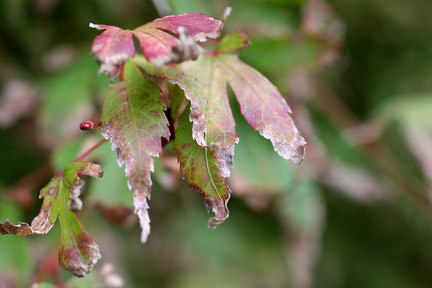
Soil
They are eager feeders, especially when young, so lots of compost or organic matter should be worked into the planting hole. One note: These plants do not do well with salt in the soil. They can handle a wider variety of soil issues, but that is deadly to them.
Water
Evenly moist, not soggy and not dry when young. Believe it or not, at maturity Japanese Maples can be somewhat drought resistant.
Wind
Obviously you can’t protect any outdoor plant from all wind, but if you can choose a more protected spot, your maple will appreciate it. Winds can dry out and brown the leaves if they are constant.
Cold/Heat
Most Japanese Maples are hardy down to zone 5, but they dislike overly hot environments. However, I grow my Coral Bark Maple in an inland northwest desert, in full afternoon sun… I just keep it well watered every day in well drained soil… However, towards the end of summer I do get some brown curling on the leaves.
Special Tips
Reduce your watering in the fall for the best color. Japanese Maples grow fairly slowly, so if after a season or two you find the spot you chose isn’t working, you can dig it up and move it, they are pretty tough. Just dig a nice sized root ball and transplant it in the fall. Water it well… even if you see some stress related leaf drop, chances are it will be just fine come spring.
Favorite Varieties
Green
Coral Bark – This variety has lovely red bark that shows well in the winter months. Leaves are green with a sight reddish edge, then turn golden in the fall. To 20 feet.
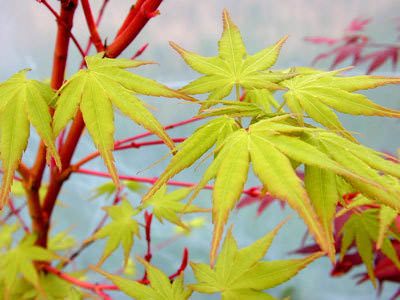
Gold
The Golden Full Moon Maple has gorgeous gold leaves, that turn more red from the tips down in the fall. To 20 feet.
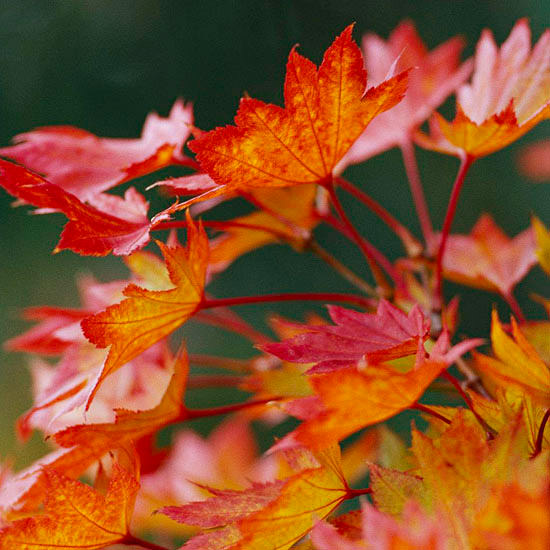
Red
Dissectum Atropurpureum – This is the common red variety that you see with fine foliage and a dwarf form.
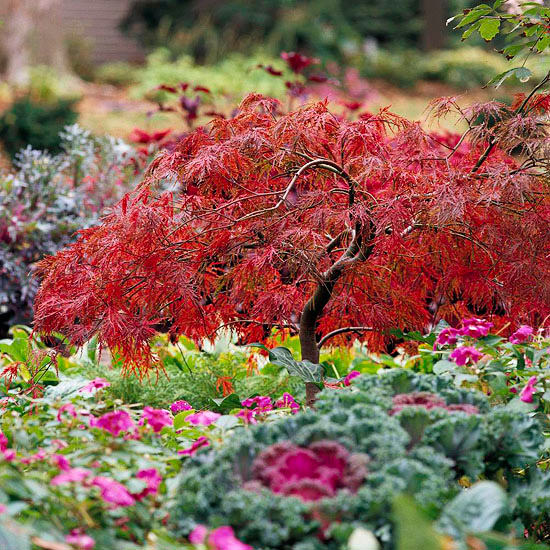
Best for Southern or Warmer Climates
Beni schichihenge – This variety is a variegated leaf with cream, green and pink, and turns to an orange golden in the fall. To 8 feet, and tolerates hot temperatures better than most.
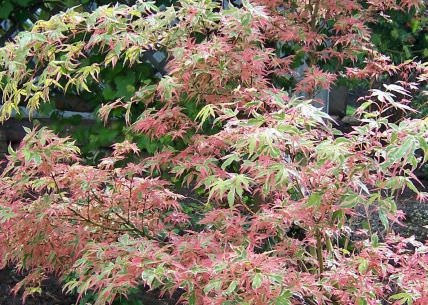
Copyright © www.100flowers.win Botanic Garden All Rights Reserved